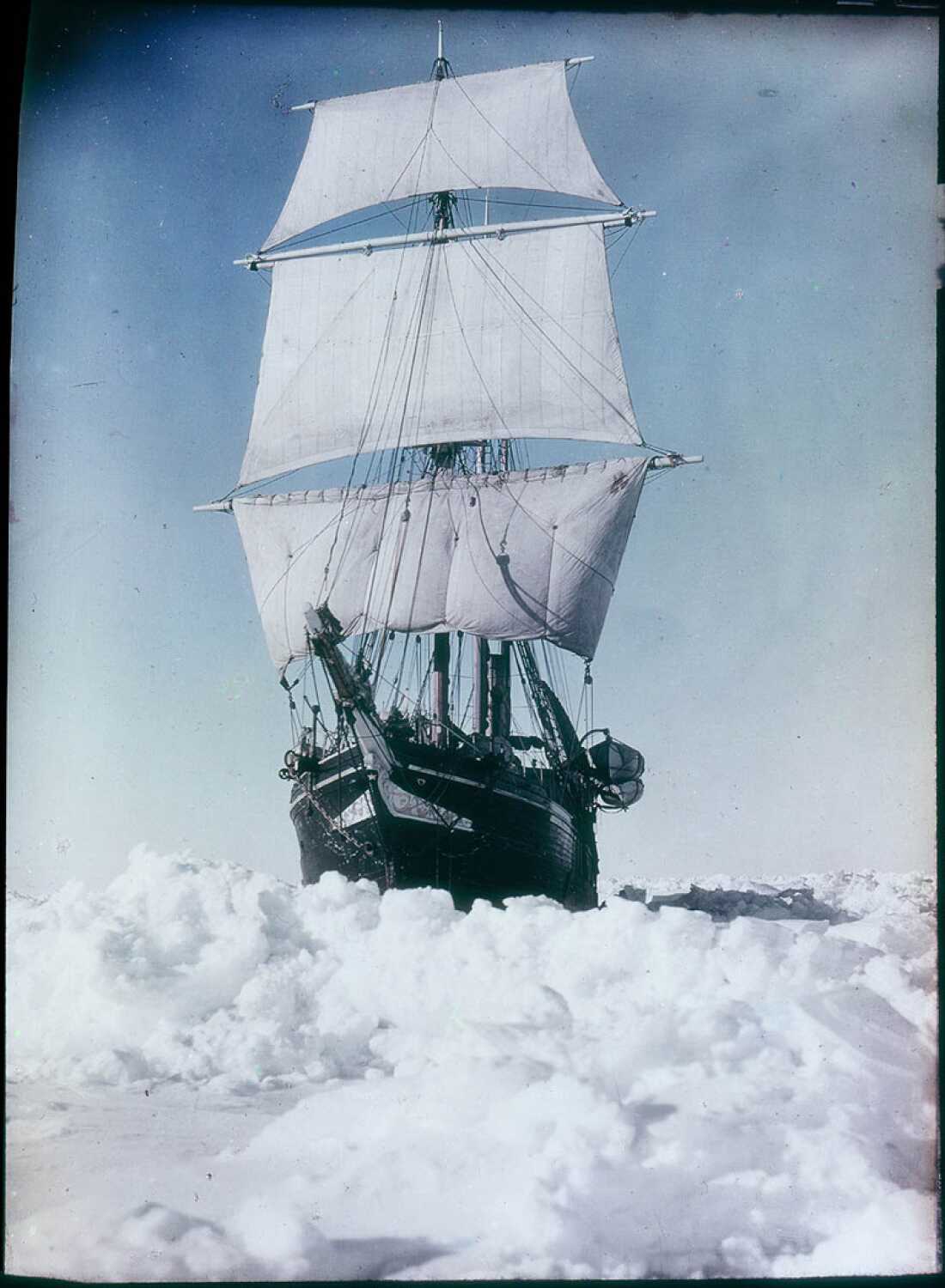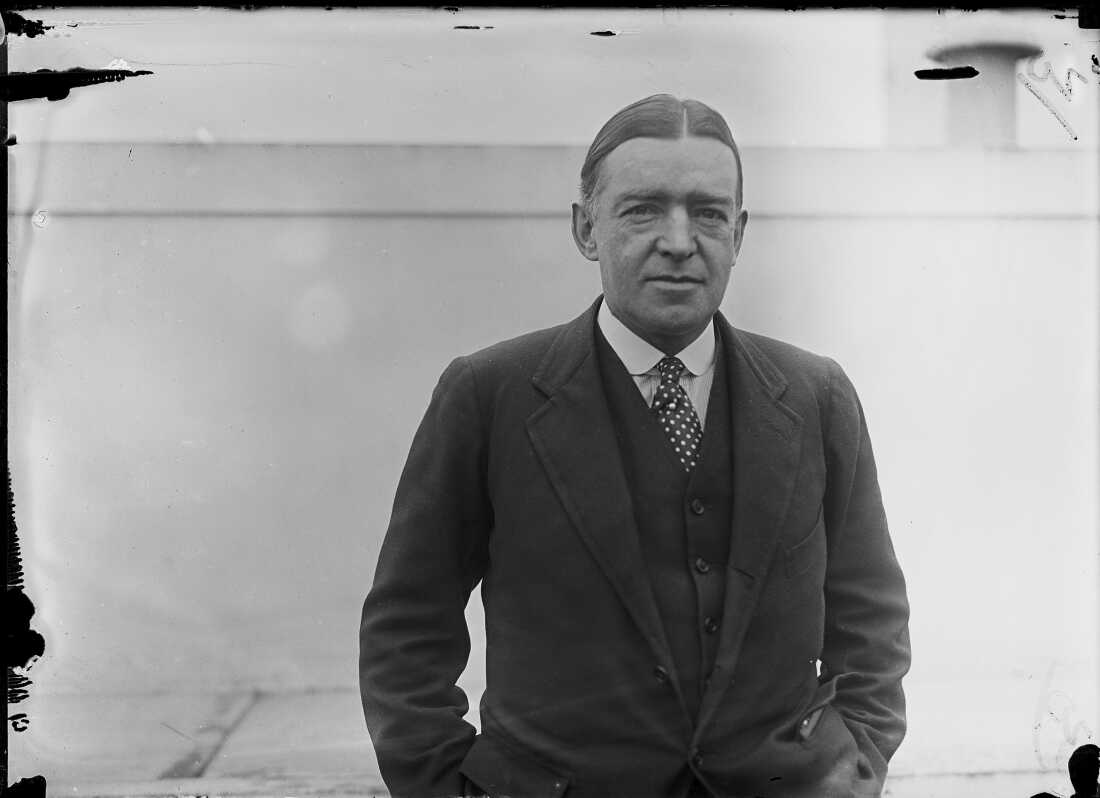Endurance is proven within the winter of 1915. The ship grew to become caught in ice and ultimately sank. A brand new paper says it wasn’t as well-built as beforehand believed.
Frank Hurley/Scott Polar Analysis Institute, College of Cambridge by way of Getty Photographs
disguise caption
toggle caption
Frank Hurley/Scott Polar Analysis Institute, College of Cambridge by way of Getty Photographs
What if one of the well-known and formidable Antarctic exploration vessels in historical past, whose crew’s story of shipwreck and survival has been instructed for greater than a century, wasn’t as robust as legend had it?
A brand new analysis paper in regards to the vessel Endurance casts doubt on some widespread beliefs about explorer Ernest Shackleton’s ship, notably that it was one of the well-built ships of its period and that it went down because of the lack of its rudder after changing into trapped in sea ice in 1915.
“Neither of that is true,” mentioned Jukka Tuhkuri, who wrote the paper and is a professor at Aalto College in Finland, the place he research sea ice and arctic marine expertise. “It was not a strong ship compared to other ships of its time, and it did not sink because of the rudder.”
Tuhkuri carried out ice science analysis aboard the 2022 expedition that situated the wreckage of Endurance. The journey bought him interested by why the ship sank. He spent the intervening years conducting a technical evaluation and brushing by historic information, together with drawings of the ship, pictures and private letters.
His paper, printed Monday within the journal Polar Report, argues that Endurance had a number of structural shortcomings that made it ill-suited for the icy circumstances of polar exploration and that Shackleton was conscious of its weaknesses.
Shackleton alluded to the ship’s deficiencies in a letter to his spouse, the place he wrote that Endurance was “not as strong as [his earlier ship] Nimrod constructionally” and that he would “exchange her for the old Nimrod any day now except for comfort.” Shackleton and his crew bought inside 97 miles of the South Pole on the 1907-1909 Nimrod expedition.
Design flaws doomed Endurance, paper argues

Endurance within the Weddell Sea, close to Antarctica. The ship grew to become caught and was crushed by ice.
Mitchell Library, State Library of New South Wales
disguise caption
toggle caption
Mitchell Library, State Library of New South Wales
In accordance with Tuhkuri, Endurance was initially named Polaris and was created for Arctic tourism earlier than Shackleton purchased it to make use of for polar exploration. The ship was constructed to resist collisions with ice floes on the ice’s edge, the place polar bears may very well be discovered looking.
“But Shackleton took it into pack ice that puts compressive loads on the hull,” Tuhkuri mentioned. “And that’s a different type of loading, and it requires different details in the hull, and those were not there.”
In 1914, Shackleton led an expedition of 27 males on two ships — Endurance and Aurora — to Antarctica with the objective of traversing the continent on land. Shackleton and the crew of Endurance sailed to at least one finish, whereas Aurora went to the opposite.
However earlier than Endurance might attain the shore, it bought snarled in dense sea ice in January 1915, leaving the ship and its crew stranded. The boys lived on the frozen ship within the Weddell Sea for months however have been finally compelled to desert it that October, taking lifeboats and a small quantity of provides. Endurance sank on Nov. 21, 1915. Shackleton and all members of the Endurance crew ultimately made it to security and survived. (All however three males from Aurora have been rescued.)
The ship was crushed by ice

Polar explorer Ernest Shackleton is pictured in New York in 1921. He led the expedition aboard Endurance in 1915.
AP/
disguise caption
toggle caption
AP/
Sea ice will not be one flat piece of frozen water, in line with Tuhkuri, however quite a “mosaic” of different-sized ice floes pushed round by wind and currents in “constant, messy motion.” Endurance drifted in frozen ice for some time, however ultimately the altering instructions of the ice squeezed the ship and finally sank it, he mentioned.
Tuhkuri mentioned that Endurance had weaker pine deck beams and oak and pine frames than different comparable ships of the time. However sure design decisions additionally made the ship’s hull weak, he mentioned. The lengthy machine room weakened it, and the hull lacked diagonal assist beams discovered on different polar exploration vessels.
Tuhkuri additionally famous that whereas harm to the rudder sprung a leak within the ship, crew members have been capable of hold it below management; the extra vital harm to Endurance was the “tearing of the keel [the structural backbone running along the bottom of the ship], which broke the ship into two halves,” he wrote.
Tuhkuri mentioned he would not need to detract from the legacy of Shackleton’s voyage however, quite, add a brand new element to the historic report.
As he writes towards the top of his paper: “Maybe Endurance was a strong and heroic ship in a poetic sense; in an engineering sense, unfortunately, it was not.”







